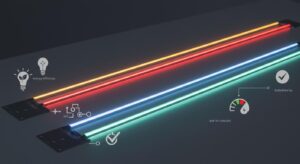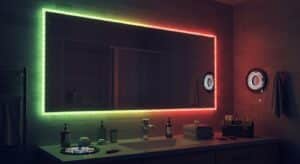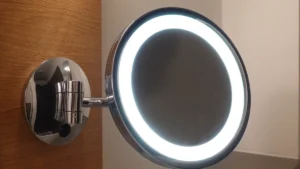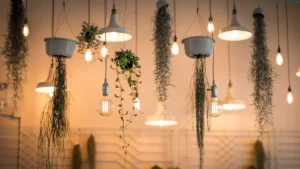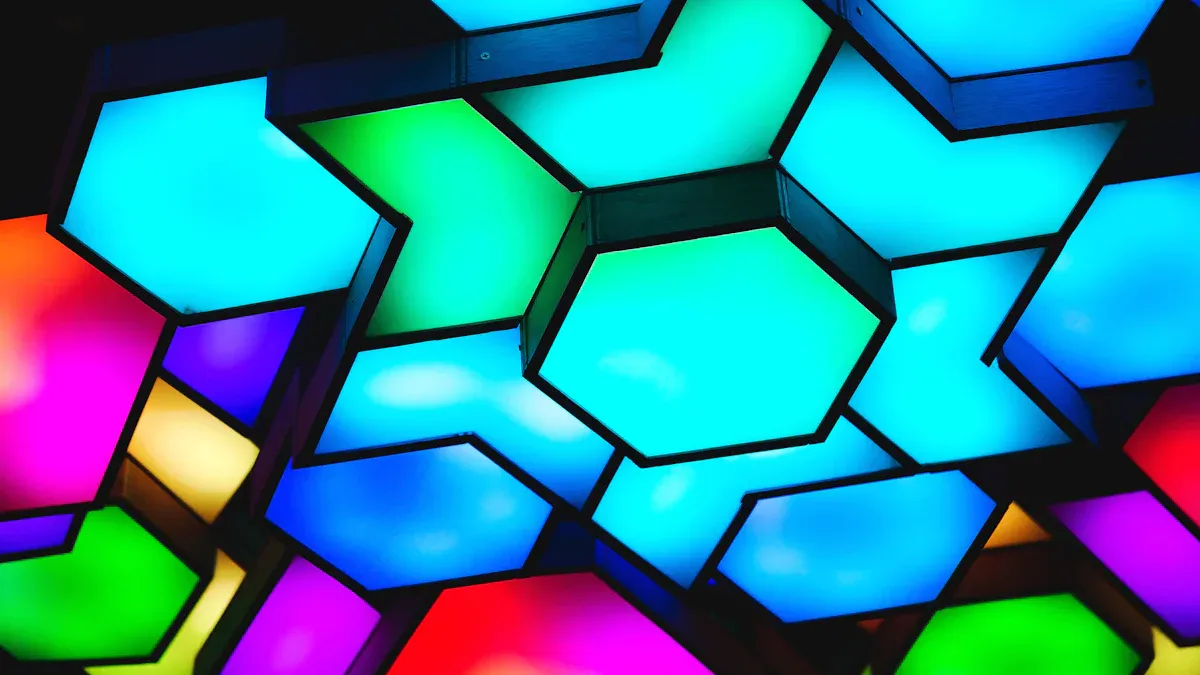
LED modules are important for eco-friendly lighting because they save energy and help the environment. They turn most of the electricity into light, using up to 85%. Old-fashioned bulbs only use 10-15% of electricity for light.
Here’s why LEDs are so useful:
They last over 35,000 hours, so you replace them less.
They don’t release harmful gases or pollution, keeping the air clean.
These qualities make LED modules a key part of today’s lighting. They are good for both people and the Earth in the long run.
Key Takeaways
LED modules use less electricity, about 85%, to make light. They are much more energy-saving than old-style bulbs.
LEDs last over 35,000 hours. This means fewer replacements, saving time and cutting waste.
Using LED lights can lower carbon emissions a lot. This helps fight climate change and keeps the environment cleaner.
LEDs can be used in many ways. They work well for creative and useful lighting ideas.
Adding smart tech to LEDs saves even more energy. It also makes lighting more comfortable for users.
Energy Efficiency and Environmental Impact
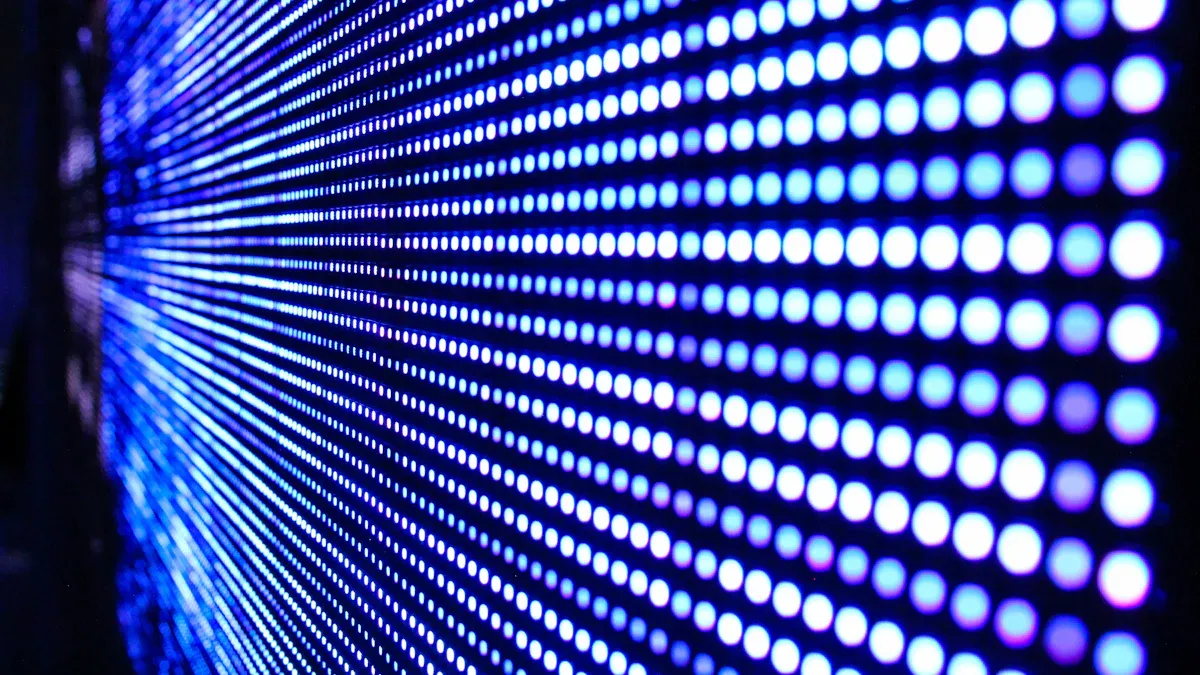
How LED modules save energy
LED modules use most of their electricity to make light. Old bulbs waste energy by turning it into heat instead. LEDs give bright light while using less power. Studies show LEDs can cut energy use by 75.65% compared to regular bulbs. This makes them great for homes, offices, and public places.
Using LEDs worldwide has saved a lot of energy. For example:
Switching commercial signs to LEDs could save 340 TWh yearly by 2030.
At LEGDATECH airport, LED screens cut power use by 67%, from 38,000 kWh to 12,500 kWh.
These examples show how LEDs save energy and support eco-friendly lighting.
Cutting carbon emissions with LED lights
LED lights help lower carbon emissions, keeping the planet cleaner. Old bulbs use more energy and release more greenhouse gases. LEDs are made to be better for the environment. For example:
Lighting Type | Energy Use | Yearly CO2 Emissions (grams) |
|---|---|---|
Incandescent Bulb | 100% | 1600 |
LED Light | 80% less energy | 200 |
This table shows how LEDs cut CO2 emissions a lot. LEDs also last longer, so they create less waste. Old bulbs last 1,000 hours, but LEDs can last 25,000 hours. This means fewer replacements and less trash.
On a big scale, LEDs could cut global greenhouse gases by 1.4 gigatons each year. In some cases, LEDs might reduce emissions by 15.69 gigatons of CO2. Choosing LEDs helps fight climate change and supports a greener future.
Helping global eco-friendly goals
LED modules are key to global eco-friendly goals. They save energy and lower environmental harm. Many groups now use LEDs to meet green targets and cut carbon footprints.
For example, LED troffer lights are popular in big buildings. They give bright, even light while using less power. This makes them perfect for large spaces. Adding LEDs to your lighting helps the world become more sustainable.
LEDs also work with smart lighting systems. These systems let you control brightness, color, and timing to save more energy. As tech improves, LEDs will lead in eco-friendly lighting, helping both the planet and your wallet.
Durability and Cost-Effectiveness
Long lifespan of LED modules
LED modules last a very long time, making them dependable. Unlike old bulbs that burn out fast, LEDs can work for 50,000 hours. This is measured by the L70 standard, which shows when brightness drops to 70%. Good heat control helps LEDs last longer. Choosing LEDs means you get steady light for years without replacing them often.
LEDs are tough and need less upkeep. This makes them great for homes, offices, or factories. Their durability saves money and supports eco-friendly lighting.
Minimizing waste through fewer replacements
Replacing bulbs often creates waste and harms the planet. Old bulbs like incandescent ones don’t last long and need frequent changes. LEDs last much longer, cutting down on trash. For example, an incandescent bulb lasts 1,000 hours, but LEDs last 25 to 50 times longer. Fewer bulbs in landfills mean less waste.
Using LEDs also saves time and effort. You won’t need to change bulbs often, which is helpful for hard-to-reach spots like high ceilings. This makes LEDs a smart and green choice for today’s lighting needs.
Cost savings from energy-efficient LED troffer lights
Using LED troffer lights in businesses can save a lot of money. These lights are bright and use less power. Over time, this lowers electricity bills and maintenance costs. For example, LEDs last 50,000 hours, while metal halide lights last only 15 months. Longer-lasting LEDs mean fewer replacements and lower costs.
Lighting Type | Maintenance Cost (15 years) | Lifespan (hours) | Replacement Cost (Year 6) | Replacement Cost (Year 12) |
|---|---|---|---|---|
Metal Halide Fixtures | $615,163 | 15 months | N/A | N/A |
LED Fixtures | N/A | 50,000 | $162,200 | $131,750 |
LED troffer lights also give a 40% yearly return on investment. They are perfect for businesses wanting to save money and improve lighting. Whether for offices or large spaces, LEDs offer great efficiency and long-term savings.
Flexibility in Design and Applications
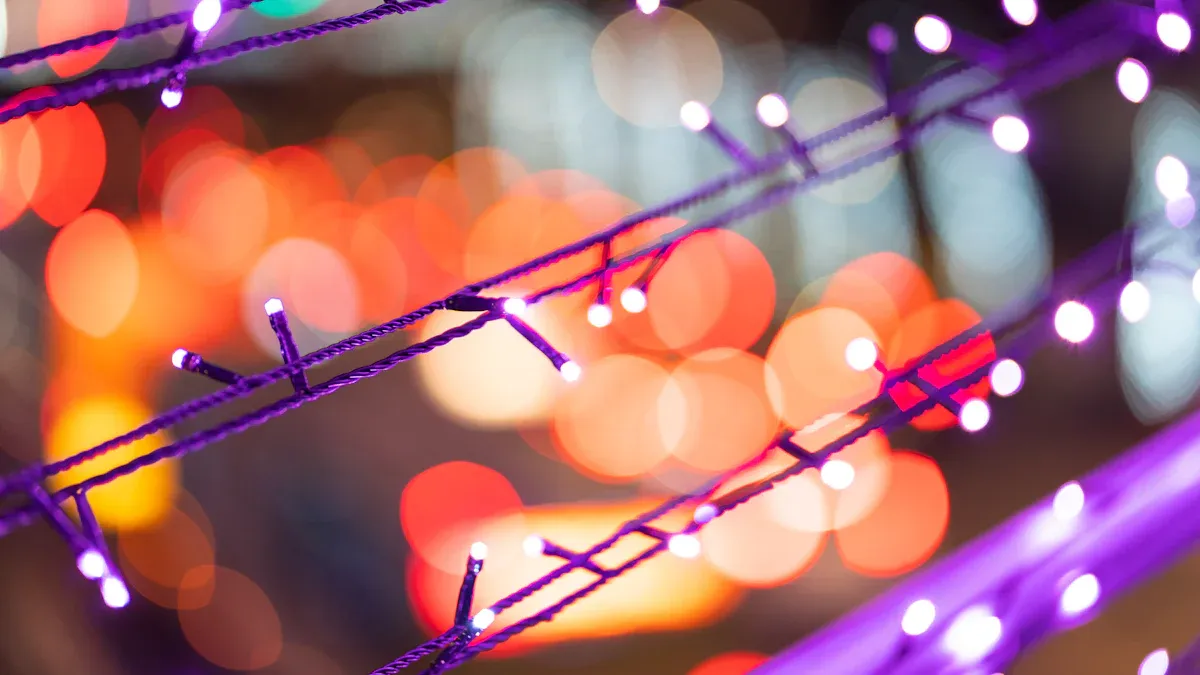
How LED modules work in different places
LED modules can be used in many ways. They are flexible and can bend into curves, circles, or odd shapes. This makes them great for creative lighting where regular lights don’t work. You can use them for small accent lights or big building lights. They also come in different shapes, colors, and brightness levels.
Tip: Use flexible LED modules for art or stage designs. Their magnetic design makes fixing them easy, even in tricky setups.
Small LED modules fit into walls, ceilings, or furniture. They can change colors and brightness to match your mood or time of day. This makes them perfect for homes or businesses.
Fun ways to use LEDs in buildings and decor
LED modules make building and decorative lighting exciting. Lights like linear bars or dotless strips can be customized for special projects. They save energy and are simple to set up, working well in homes or offices.
Try COB LED strips, CSP LED strips, or wall washers for creative designs. For outdoor spaces, flexible wall washers can bend to light up buildings or gardens. These lights help show off building details or create cool effects.
Note: LED lights let you design spaces your way while saving energy.
Using LEDs at home, work, and factories
LED modules are great for homes, offices, and factories. At home, they save energy and let you adjust brightness and color for comfort. Offices use LED troffer lights for even lighting and lower power bills.
In factories, LEDs handle tough conditions and last a long time. They work better than old lights and stay bright for years. LEDs last 50,000 to 100,000 hours, so you don’t need to replace them often. This saves money and time for big jobs.
Callout: Outdoor LEDs are built to handle bad weather. They’re great for streetlights, parking lots, and building lights.
Technological Advancements in LED Modules
Smart lighting integration for energy efficiency
Smart lighting has changed how we use LED modules. These systems let you adjust brightness, color, and timing easily. This helps save energy and fits your needs better. For example, adding smart tech to LEDs can cut energy costs a lot. One project saved 75,000 kWh of energy, reducing costs by 25%. It also made people happier, with 92% saying they felt more comfortable.
New LED designs, like SMD (Surface-Mounted Device) modules, make them even better. They shine brightly but use less power. Using smart lighting with LED troffer lights is great for homes, offices, and public spaces. It saves energy and helps the planet.
Intelligent control systems for optimized lighting
Smart control systems make LED lighting even smarter. They use sensors to check natural light and dim LEDs when needed. This stops spaces from being too bright and wasting energy. Studies show many places are 30-50% brighter than needed. Smart systems fix this by keeping light levels just right.
These systems also let you control lights remotely and track energy use. For example, they measure power use and predict when repairs are needed. This saves energy and lowers costs. Adding smart controls to LED troffer lights is perfect for offices or factories.
Innovations shaping the future of sustainable lighting
The future of LEDs includes exciting new ideas like PeLEDs (perovskite light-emitting diodes). These LEDs are eco-friendly and cost-effective. Research shows PeLEDs could last 10,000 hours and cost the same as current LED panels. They are a great choice for green lighting.
Other cool ideas include RGB LEDs that change colors based on the light around them. Flexible designs also allow creative uses for LEDs. These new ideas keep LEDs leading in energy-saving lighting. By using these advancements, you help the planet and enjoy better lighting in homes, offices, or other spaces.
LED modules are important for making lighting more eco-friendly. They use 75% less energy than old-fashioned bulbs, cutting electricity bills and carbon pollution. LEDs last much longer, about 25 times more than regular bulbs. This means fewer replacements and less work to maintain them. They are also safe for the planet because they don’t have harmful stuff like mercury and can be recycled.
Choosing LED troffer lights gives you better lighting and helps the environment. As technology gets better, LEDs will keep improving. They will provide great lighting and long-term benefits for people and the Earth.
FAQ
Why are LED modules better than old bulbs?
LED modules turn most electricity into light. Old bulbs waste energy as heat. LEDs last longer, use less power, and make less trash. They give better light and are kinder to the planet.
Can LED modules be used outside?
Yes, LED modules work great outdoors. They can handle bad weather and give bright, steady light. Use them for streetlights, parking lots, or garden lights.
How do LED modules help save money?
LED modules use less power and last longer than old bulbs. This lowers your electricity bills and replacement costs. Businesses using LED troffer lights save a lot over time.
Are LED modules good for the environment?
Yes, LED modules are eco-friendly. They don’t have harmful stuff like mercury. They last a long time, so there’s less waste. Their energy-saving design also cuts carbon pollution.
Can LED modules be used for creative designs?
Yes, LED modules are very flexible. You can shape them in many ways and pick different colors or brightness. They’re great for cool lighting in homes, offices, or buildings.
See Also
Improving Signage Illumination With LED Modules Effectively
The Advantages of Choosing LED Modules for Signage
The Rising Popularity of 12V LED Modules Explained
Selecting The Perfect LED Light Module For Your Needs
Key Tips For Selecting The Ideal LED Sign Module
